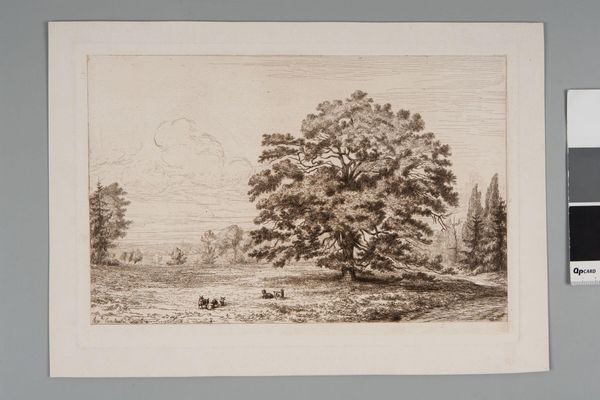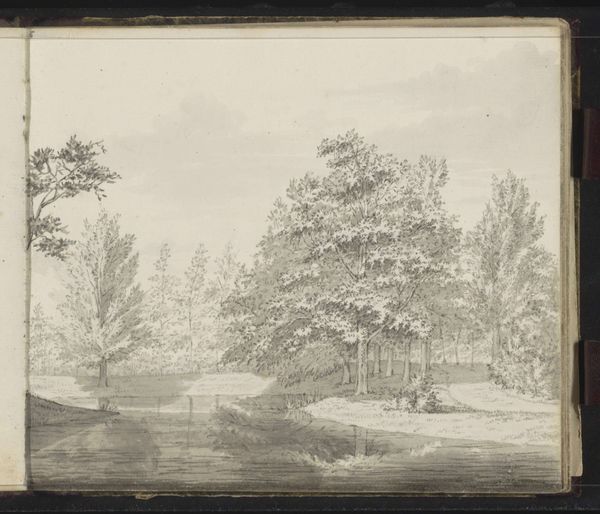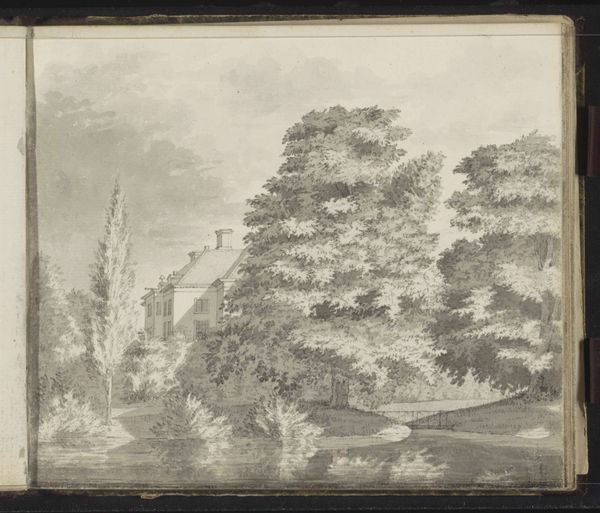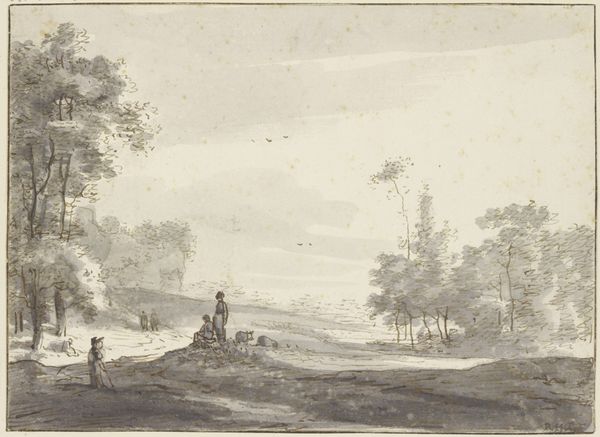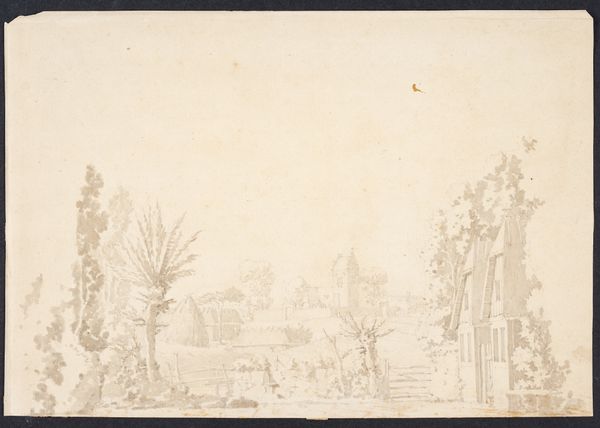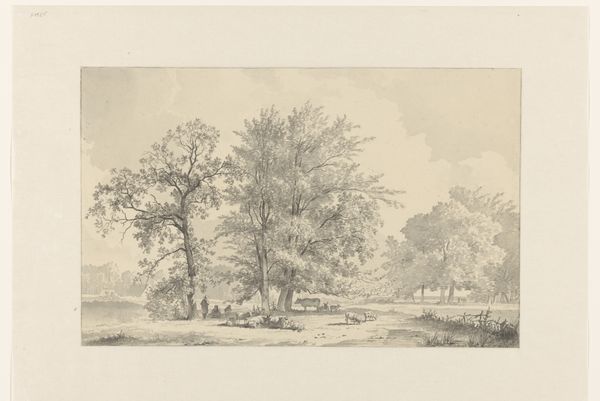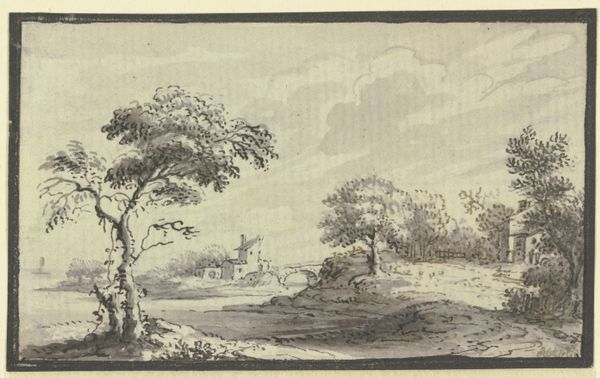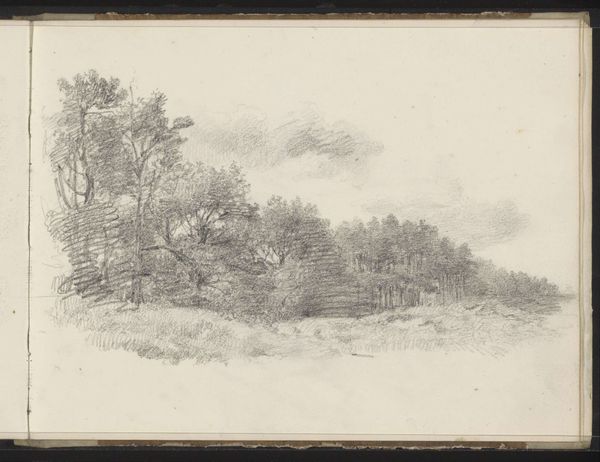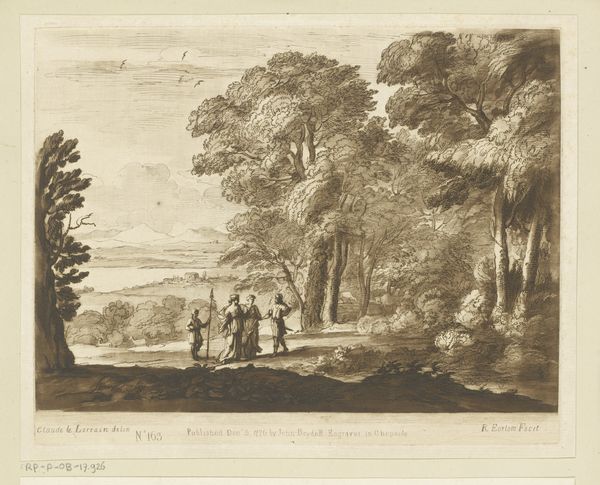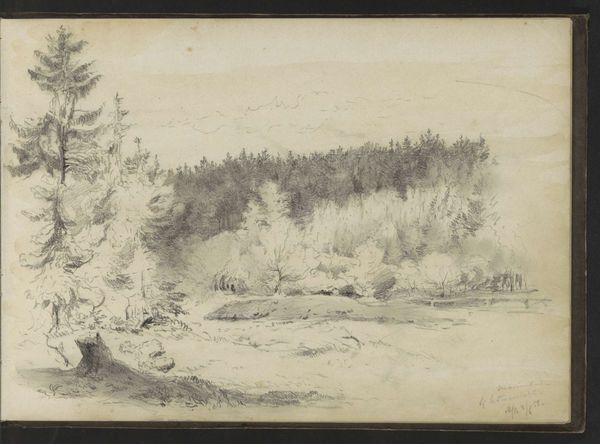
Copyright: Rijks Museum: Open Domain
Curator: Take a moment to observe "Landschap met bomen en een toren" – a work by Lambertus Lingeman created sometime between 1839 and 1894, rendered with watercolor and colored pencil. Editor: My first impression is of a quiet, contemplative scene. The muted tones create a serene atmosphere, almost melancholic. It feels quite intimate, doesn’t it? Curator: It does. Given its probable dating in the Romantic period, we can assume that Lingeman carefully chose his materials, emphasizing accessible and portable ones to record an individualized vision of the landscape in rapid sketches and watercolors. This could reflect rising trends of amateur artmaking within expanding markets and urban centers. Editor: Interesting point. The materiality of watercolor, for instance, lends itself well to portraying ephemeral light and atmospheric conditions that were so crucial for romantic landscape painting. The tower and the rustic fence are intriguing too. Do you think they serve as symbols of the encroaching presence of civilization on an untouched idyll, typical of the era? Curator: It is interesting to observe them and think of the Romantic notion of progress versus nature, certainly. What strikes me, too, is Lingeman's likely position as a mid-level civil servant rather than a wealthy leisure painter, which lends another dimension of labor and socio-economic identity in contrast to elite tastes. How would a painting like this potentially relate to discussions around social identity in the Dutch landscape? Editor: That's a key angle. Considering the time of its making, the rise of bourgeois nationalism, colonialism, and rapid urbanization surely shape how the artwork signifies power relationships between society and the land. We must reflect upon the artist's place and agency to resist or reproduce prevailing sentiments on environment, belonging, and identity during the time. Curator: And yet, at the level of production, one might look at where his artistic materials came from and question whether this very aesthetic project hinges on extracting colonial resources or erasing non-European artistic styles in favor of a supposedly 'universal' view. Editor: I agree that taking that approach enables us to bring to light issues about resource consumption, colonialism, and exploitation, revealing layers beneath its initially serene appearance. This is where a contemporary interpretation enriches our dialogue with art from the past. Curator: Indeed. Lingeman's landscape invites contemplation of our connection to the natural world—in ways the artist probably didn’t realize at the time. Editor: Precisely, which highlights the endless ways we continue engaging artworks from the past to make sense of pressing concerns now.
Comments
No comments
Be the first to comment and join the conversation on the ultimate creative platform.
